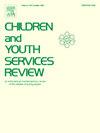Preliminary impact of a combination intervention on intention to migrate and school absence among adolescent girls: Results from a pilot cluster-randomized clinical trial in Northern Ghana
IF 2.4
2区 社会学
Q1 FAMILY STUDIES
引用次数: 0
Abstract
Background
Poverty in sub-Saharan Africa, together with family context as a contributing factor, often results in unaccompanied rural–urban child migration and high incidence of child labor (24%), leading to heightened vulnerability and risk. In this study, we examined the preliminary impact of a combination intervention that combined family economic empowerment and family strengthening interventions on intention to migrate (primary outcome) and school absence (secondary outcome) among adolescent girls in Ghana.
Methods
Longitudinal data from adolescent girls (n = 97) participating in the ANZANSI (resilience in Dagbani −the local language in the study area) pilot study (2019–2022) were analyzed. Adolescent girls and their caregivers were randomized at the school level to two study conditions: bolstered usual care and the ANZANSI combination intervention delivered over 9 months. Data were collected at baseline, 9 months and 15 months post-intervention initiation. We used mixed-effects logistic and linear regression models to examine the impact of the intervention on absence from school and intention to migrate.
Findings
At 15 months post-intervention initiation, the ANZANSI group had significantly lower intention to migrate compared to the control group (b = -0.61, 95 % CIs: −1.18, −0.04, p = 0.04). The intervention had no significant impact on school absence. However, the results are trending in the hypothesized direction, indicating that the intervention appears to reduce the likelihood of higher school absences over time, marked by the significant effect of time (χ2 [2] = 6.49, p < 0.04) for the intervention group.
Conclusion
These outcome trends support the rationale for a larger trial to test the efficacy of the ANZANSI intervention.
求助全文
约1分钟内获得全文
求助全文
来源期刊

Children and Youth Services Review
Multiple-
CiteScore
6.30
自引率
6.10%
发文量
303
期刊介绍:
Children and Youth Services Review is an interdisciplinary forum for critical scholarship regarding service programs for children and youth. The journal will publish full-length articles, current research and policy notes, and book reviews.
 求助内容:
求助内容: 应助结果提醒方式:
应助结果提醒方式:


